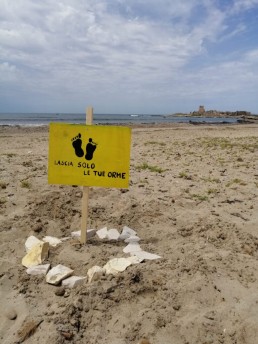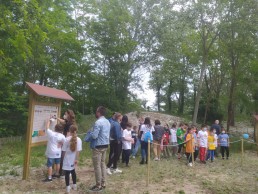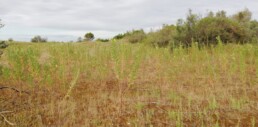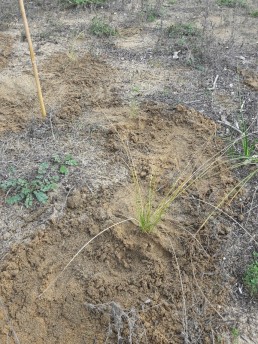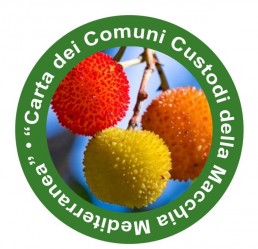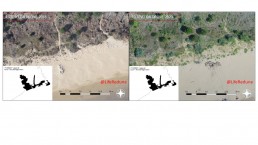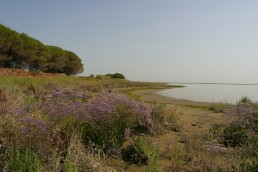(Bad) habits and sustainable tourism
Before the COVID pandemic, In Europe, the tourism industry produced almost 3.7% of EU GDP, with 1.8 million businesses and over 11.3 million jobs. If the allied industries are also taken into account, tourism-related sectors generated around 10% of EU GDP and 11% of the workforce (Eurostat 2018).
The question arises whether it is possible to generate this revenue without, therefore, creating a major impact on the environment.
Sustainability in the tourism sector is so important that the UN declared 2017 as the "International Year of Sustainable Tourism" and included the topic among the goals of the UN 2030 Agenda.
;
Of course, there are many ways to preserve the environment while on holiday and many of them are known and practised by many tourists, such as saving water and energy resources, not polluting, not encroaching on protected areas, respecting prohibitions, preferring local products, etc. etc.
But among the many small habits that we no longer pay attention to, which ones can we use to damage the environment, even unknowingly?
Thinking about the beach, the interface between water and land, how many of us behave in a sustainable manner? And who is aware of laws and regulations that they might break without ever having thought of them before?
Who does not like to pick up seashells while walking and keep them as a souvenir? And yet, shells are made up largely of calcium carbonate, a nutrient that is valuable to the ecosystem because it promotes the stability of the marine environment: it is a substrate for marine plants, acts as protection for algae and crabs and is a material for building birds' nests.
Who would not spend hours watching their dog frolicking on the free beach, perhaps at sunset? Unfortunately, dogs are one of the main causes of nest destruction and predation on the chicks of seabirds nesting in the sand, including the Common Red-backed Rock Thrush, an endangered and protected species under both national hunting and European biodiversity conservation legislation.
Who as a child did not catch a crab, a mollusc or a fish with a net and keep it in a bucket full of water and release it at night? Unfortunately, these little animals will meet a certain death as the temperature of the water in the bucket leads to irreversible damage. Article 544 of the Penal Code states that: "Anyone who cruelly or unnecessarily causes the death of an animal shall be punished by imprisonment from 4 months to 2 years".
;
Who wouldn't prefer to lie in the sun in the dunes, away from the crowds, and perhaps go exploring further into the pine forest, even if only for a bit of refreshment? Who ever thought that doing so might destroy rare plant species and valuable habitats? In fact, dune and backdune environments are part of the protected areas of the Natura 2000 network, an ecological network for the preservation of biodiversity. The Penal Code Art. 733-bis "Destruction or deterioration of habitats within a protected site" states that "Whoever, outside the permitted cases, destroys a habitat within a protected site or in any case deteriorates it, thus compromising its state of conservation, shall be punished with imprisonment of up to eighteen months and a fine of not less than 3,000 euros".
So, reflecting on our (bad) habits, are we sure that sustainable tourism is not easier to achieve than we might think?
The forgotten dune
Once upon a time there was a forgotten dune...
It was an old dune. Ancient maps show that there were "sand mountains" between Chioggia and Brondolo at the end of the 18th century, and until the 1960s the dunes were still present in the coastal area of what is now Sottomarina di Chioggia (VE).
Our dune had long resisted urbanisation, mass tourism, cultivated fields that were then left uncultivated... and as chance would have it, it had ended up in the garden of the Istituto Comprensivo Chioggia 5. Other, less fortunate, bumps of land attributed to the remains of the historic dunes had ended up in the green areas belonging to various local organisations: the civil protection headquarters, a residence for the elderly and a theatre centre.
One fine day, after a long time when the children had stopped going to school because of a terrible pandemic and when they were finally able to go back they had to stay outdoors as much as possible, the school headmistress remembered the old dune. The school already had a botanical garden and everyone had seen how much the children liked "doing to learn" and how much they learned by doing. So the idea was born to save the old dune from decay to create a beautiful botanical garden as a support for educational activities for the students.
The good headmistress called together teachers, professors and professors and together they devised a grandiose multidisciplinary project that included geography with the study of the climate and the territory, history with the collection of ancient documents and the testimonies of the old wise men of the village, art with the beautiful drawings of plants and flowers, and science with botany and the environment.
But all this was not enough to restore the old dune to its former glory.
So they called in the experts from Life Redune, a project financed by the European Community precisely to rehabilitate the habitats of the coastal dunes. Veneto Agricoltura intervened, analysing the old dune, its environmental context, exposure to wind and salt, and planned the necessary interventions.
First of all, the dune was cleaned of weeds and shrubs, thanks also to the parents and volunteers of "Amico Giardino", then it was raked and cared for until the 30 psammophyte seedlings, i.e. sand-lovers, born and raised at the Veneto Agricoltura Centro Biodiversità Vegetale e Fuori Foresta arrived. With love and patience, one by one the seedlings were removed from their pots and planted in the sand, according to the pre-established map to recreate the 2110-2120 habitat of the grey dunes. Each seedling has its place! Shrubs here in the sun, grasses there where there is some shade. The Ammophila arenaria at the top because it is the 'engineer of the dunes', holding the sand with its long rhizomes and catching the grains of sand with its thick tufts, carried by the wind as it falls on the dune and makes it rise. The more the sand accumulates, the bigger Ammofila becomes. Who knows what beautiful tufts it will display next summer!
But then who could explain all this to the parents? And who could give the teachers 'tips'? And who would answer the children's questions? The Cà Foscari University of Venice intervened, holding an environmental education meeting for adults and four meetings for pupils and students, divided into age groups. They presented the dunes, the many causes of threats to their habitats, the importance of dune ecosystems not only for biodiversity and the environment but also for protecting the coastline from erosion and flooding.
In order to protect the old dune, the Comprehensive Institute created a demarcated walkway so that everyone, young and old, could look at the dune, its flora, the small reptiles that hide there and the pollinating insects that visit it, without stepping on it. And to complete the work, three beautiful large information panels were put up to explain what the coastal dunes of the northern Adriatic are, how they are formed, what their habitats and flora are, and above all, how to behave when on the beach to preserve the dune environments.
And as in every good fairy tale with a happy ending, to celebrate the friendship between the old dune and the adults of tomorrow, a wonderful party was held where everyone was invited, but really everyone, because the dune of the Istituto Comprensivo Chioggia 5 is no longer just part of the history of the Sottomarina area but has become a part of the present for the citizens of today and the children of tomorrow.
Happy new life dear old dune!
And the sun was shining
On 22 April 2021, World Earth Day celebrations were held all over the world, the largest awareness-raising event for the protection of the planet, now in its 51st edition..
The creator of Earth Day was American activist John McConnell who proposed in 1969, during the San Francisco UNESCO Conference, a day to dedicate to the Earth to raise awareness of the need to preserve ecosystems and thus all forms of life on our planet.
This year the theme of World Earth Day was "restore your Earth" and who better than Life Redune to take the opportunity to restore a little piece of our land?
;
The Life Redune team invited its most active stakeholders to the naturalistic oasis of Vallevecchia, one of the project's intervention sites, for a day full of activities.
;
Ca' Foscari University, lead partner of the Life Redune project, welcomed the participants, presenting the project and its progress and showing live examples of dune habitats.
The project partner SELC coop. gave a concrete demonstration of the environmental engineering works by "reconstructing", in front of everyone's eyes, a dune profile using only sand from the sandy shore in front of the project and beached material to reinforce the foot of the dune. At the same time, informative and dissuasive signs were installed along the equipped paths of Vallevecchia in preparation for the next tourist-bathing season.
The Veneto Region, the project partner, presented to the representatives of the Participating Municipalities - Eraclea, San Michele al Tagliamento and Cavallino Treporti - the Conservation Measures of the Special Areas of Conservation (SAC) of the Natura 2000 Network to be integrated in the beach maintenance activities.
;
EPC srl, a project partner, has been able to reinforce its collaboration with the local associations with which it will continue to carry out environmental education activities in 2021: the Auxiliary Coast Guard of the Delta Tagliamento, Legambiente Veneto Orientale Circolo "Gerutto Pascutto" and the Comitato Foce del Tagliamento, as well as with the Carabinieri Forestali di Portogruaro who will ensure the monitoring of the project's intervention sites.
The tourist operators involved - Bibione Mare and Mete Beach - were able, together with the municipalities, to participate in monitoring the socio-economic impact of the project on the tourism sector and to organise the next environmental education trips to the dunes.
The presence of Dr. Lucio Panzarin of ISPRA gave the opportunity to talk about the protection of avifauna and in particular the conservation of the Kentish plover (Charadrius alexandrinus), which has returned to nest on the Veneto coast after years of absence.
The Centre for Plant and Forest Biodiversity of Veneto Agricoltura, a project partner, together with the staff of the Sistemazioni Idraulico Forestali (SIF) has planned the next autumn planting campaign for dune habitats.
Finally, at the end of the event, all participants were able to leave a video-testimony on their motivations for working with Life Redune and the meaning of the project for each of them.
Networking to preserve Adriatic coastal dune habitats
The LIFE Programme recognises the importance of "networking" and supports activities that develop relationships between individual projects that have elements in common, such as themes, methodologies, objectives, or categories of stakeholders. In this perspective, LIFE REDUNE and LIFE CALLIOPE (Coastal dune habitats, sublittoral sandbanks marine reefs: conservation, protection, and threats mitigation. Https://www.facebook.com/LifeCalliope.it), both dedicated to the protection of the coastal environment, have started at the end of December 2020 a collaboration to share results and experiences.
Both projects operate in territories where there are still some areas with dune ecosystems that are however seriously threatened by tourism activities, unsustainable fishing, alteration of their morphology and vegetation removal actions.
These problems are partly addressed by the two projects with common approaches: the reconstruction of the dune cordon, the requalification of the habitats with the transplanting of new plants produced in greenhouses and the fight against invasive species, the involvement of local authorities for an eco-sustainable territorial development and the reduction of anthropic pressure also through the environmental education of tourists and residents.
Focusing on two specific thematic aspects, LIFE REDUNE and LIFE CALLIOPE have organised two joint events to exchange information, benefit from new technical approaches and achieve greater capacity to operate at national and European level.
The webinar "Visiting nurseries: good practices from LIFE REDUNE and LIFE CALLIOPE" was dedicated to sharing knowledge on propagation techniques for mobile dune species; this webinar was held on Thursday 29 October 2020. An unexpected result of the meeting was the decision to jointly draft a "Manual of propagation of dune species" between the two projects, which aims to document the experience of nursery production of numerous species of the Adriatic coastal dune habitats, providing technical identification and cultivation sheets for each species.
The webinar "Reconstruction and monitoring of mobile dunes: good practices of LIFE REDUNE and LIFE CALLIOPE" led to the sharing of knowledge and good practices on techniques for reconstruction and rehabilitation of mobile dunes. The collaboration was also extended to the Interreg Italy-Croatia project CASCADE (CoAStal and marine waters integrated monitoring systems for ecosystems proteCtion AnD managemEnt, www.italy-croatia.eu/web/cascade) for issues related to remote monitoring of ecosystems in the project sites. This webinar was held on Friday 4 December 2020 and was live-streamed simultaneously on the Facebook pages of Life REDUNE and Life CALLIOPE.
The two webinars and subsequent contacts made it possible to establish relationships and create synergies between universities, nurseries, experts and European projects on the topic. In addition, the events started the process of participation and involvement of stakeholders who participated in the webinars such as ARSARP Molise and the associations Ambiente Basso Molise, Legambiente Abruzzo and Legambiente Molise.
Oenothera or not Oenothera? Managing sandy coastal systems is the secret
Invasive alien plant species are considered a major cause of global biodiversity loss, especially when interacting with other global drivers of change such as habitat loss and climate change.
Predicting the likelihood of establishment and invasion of alien species, identifying the factors responsible for spatiotemporal patterns of invasion and quantifying their relative importance are essential elements for risk assessment and adaptive management of invasive alien plant species.
The work carried out by the University Cà Foscari, REDUNE partner, aimed at predicting the probability of establishment and successful invasion of Oenothera stucchii Soldano, a neophyte invasive species belonging to the Oenothera subsection. Oenothera, in xerophilous grasslands of grey dunes.
Three sampling sites on the Venetian coast were chosen for this study: Vallevecchia, the Laguna del Mort and the Cavallino Peninsula. At the sampling sites, xerophilous grey dune grasslands develop inland of the shifting dunes and occupy the portion of the coastal zone ranging from approximately 20 to 80 m from the sea.
Based on fine-scale field data, the authors described the mechanisms determining the spatial patterns of occurrence and abundance of O. stucchii in coastal dunes and provided a quantitative estimate of the most susceptible areas of grey dune habitats prone to invasion by O. stucchii, combining proximity to beach accesses (less than 50 m), low resident vegetation cover (<40%), high number of annual species (10 species) and low embryonic and mobile dune crests (<5.5 m).
These results provide useful suggestions that can be used to plan appropriate measures to prevent the establishment and spread of O. stucchii in sandy coastal systems. These should include the regulation of beach accesses, which should be planned at a distance of at least 200 m from each other, to secure areas sufficiently distant from beach accesses with a high probability of O. stucchii absence, and the closure of unauthorised paths that jeopardise the regulation of beach access. Measures limiting human trampling in dune systems need to be supported by stakeholders, but have proven effective in allowing the plant community to recover even in a short period of time. The resilience of xerophilous grasslands in the grey dunes could also be improved by filling vegetation gaps with new plantations of native perennial species to increase biotic resilience. Perennial species permanently occupy the site and form stable communities over time, thus reducing niche vacancies.
This developed model can also be applied to closely related congeners species included in the subsection. Oenothera, which shares similar biological and ecological traits.
References:
Using fine-scale field data modelling for planning the management of invasions of Oenothera stucchii in coastal dune systems.
Gabriella Buffa, Carlo Gaetan , Stefano Piccoli , Silvia Del Vecchio , Edy Fantinato
Ecological Indicators 125 (2021) 107564
Call for Proposals for the LIFE REDUNE Methods Replication and Transfer Visit
In the framework of the Replication and Transfer Action, LIFE REDUNE has launched a call forthe selection of two Projects that will be able to receive the LIFE REDUNE team in order to transpose and replicate the methods and good practices developed within the LIFE REDUNE project..
The in-person visit of the LIFE REUNE team will take place between June and September 2021, unless restrictions on physical travel are imposed by current legislation to combat the COVID19 pandemic, in which case the visit will be replaced by virtual meetings.
The methods that LIFE REDUNE will make available for replication and transfer activities are:
- Morphological remodelling and reconstitution of mobile dune habitats
- Seed collection and nursery cultivation of dune species;
- Use of drones for monitoring the dunes;
- Containment of the invasive alien species Oenothera stucchii
.
.
The call is reserved for Projects operating in the field of coastal dune habitat protection on the Italian territory and preferably, but not exclusively, financed by the EU LIFE programme.
The deadline for the call is 31 March 2021..
The call and the application form can be downloaded by clicking on the two links below:
Restocking Stipa veneta
Among the objectives of LIFE REDUNE is the strengthening (or restocking) of the populations of Stipa veneta* Moraldo present in the sites covered by the project. The aim is to increase the density of the existing populations through the planting of 1,000 conspecific individuals and to increase their genetic diversity in order to increase the viability of the populations themselves.
The action was planned on the basis of previous studies on the biological and ecological aspects of the species, causes and threat factors, as well as the physical characteristics of the sites involved and the processes underway.
Stipa veneta*, also known as the "Fairy Dublin", is the only species of Stipa in Europe that has adapted to live in maritime dune environments. The primary habitat of the species is the xerophilous backdune grasslands (grey dunes) of habitat 2130*. It is a very rare and endangered species, listed as a priority species in All. II (and IV) of Directive 92/43/EEC as well as on the IUCN Red List as Threatened (EN). The risk of extinction of the species is very high.
The threat factors linked to the biology of the species are combined with those linked to the habitat, which is subject to numerous pressures, both natural (evolution of the biocenosis) and anthropic (expansion of agriculture and human settlements; tourist infrastructures; trampling, etc.). The conservation status at national level (Continental Biogeographic Region) is defined as bad (U2), and presents negative trend (ISPRA, 194/2014).
The LIFE Redune Project foresees a series of coordinated actions and interventions dedicated to Stipa veneta* such as:
- "Plant nursery production" consisting in the collection of seeds from wild populations and the nursery production of the seedlings necessary for the implementation of the action to strengthen the populations of Stipa veneta*;
- "Strengthening of the populations of Stipa veneta*", which foresees the transplanting of Stipa veneta* in areas where small populations are now naturally existing along the coast of the northern Adriatic;
- "Monitoring of populations and plants of Stipa veneta*", which envisages the continuous control of introduced individuals and populations of the species at all project sites in both the ex-ante and ex-post phases.
With specific regard to the activities for strengthening the populations of Stipa veneta*, on 20 January 2020 the first planting of 500 Stipa veneta* plants took place within the "Laguna del Mort and Eraclea pinewoods" site. Prior to planting, the area underwent a thinning intervention within the 2130* - 2250* mosaic and an intervention to clean up the material beached following the events of the exceptional sea storm of 12 November 2019.
In the autumn period October-November 2020, the progress of activities related to the action of strengthening the population has provided for the planting of n. 42 seedlings of Stipa veneta* in the area of the Laguna del Mort (Municipality of Eraclea - VE ).
The seedlings were planted in small groups of 3-5 individuals at a distance of about 20/30 cm from each other. The single groups were spaced in different points of the habitat and made recognisable by the affixing of a bamboo cane with a marker.
The strengthening of the populations will continue during 2021 with the planting of an additional 500 individuals.
A network of stakeholders to protect the Mediterranean maquis
Networking among local stakeholders makes it possible to spread knowledge about the local environment, promote respect for it and, ultimately, protect it. This benefits biodiversity and ecological connectivity, but also the transmission of cultural values and territorial promotion.
Stakeholders in the area can be public administrations but also tourism operators, farms, promotion bodies, local associations and private citizens.
On the one hand, the LIFE REDUNE project is carrying out an action dedicated to the involvement of local stakeholders and, on the other hand, it is weaving a network with other projects in order to explore new opportunities for involvement and avoid the most common difficulties by sharing concrete experiences in other territories.
A good example comes from Sicily.
The Mediterranean Scrub is one of the most important ecosystems on the planet because, despite its modest territorial incidence (2%), it is home to 20% of animal and plant species. The scientific community recognises the Mediterranean scrub as a fundamental element in the fight against environmental pollution that must be protected precisely because of its exposure to significant risks such as fires and progressive desertification.
The initiative of the "Carta dei Comuni Custodi della Macchia Mediterranea" (www.cartamacchiamediterranea.it .) stems from the idea of networking among municipalities, which become "Custodians" of the Mediterranean scrub, committing themselves to elaborate, together with parks and associations, programmes for the protection of the rich naturalistic heritage present, above all, on the Sicilian territory.
The Charter of the Municipalities that are Custodians of the Mediterranean Scrub is therefore a "Pact of Honour" so that the Sicilian territorial and landscape specificities are valorised as well as an invitation to the Union of intents among the different Local Administrations.
On the occasion of the National Day of Trees 2020 also the Municipality of Graniti, the last in chronological order, has adhered to the Charter of the Municipalities that are custodians of the Mediterranean scrub. In fact, the Municipal Council chaired by Mayor Carmelo Lo Monte, with its resolution of 20 November 2020, gave a further strong signal in the direction of sustainability and enhancement of this important ecosystem.
This new adhesion will be a moment of beginning activities with actions of environmental education and sustainability both in the municipal territory, and in collaboration with the neighbouring municipalities that have already adhered and supported the Charter and with one of the associations supporting the project such as ASSOCEA Messina APS (www.ceamessina.it), which has a section and territorial offices in the Alcantara Valley (in Floresta, Castiglione di Sicilia and Giardini-Naxos).
Source: https://www.facebook.com/CartadeiComuniCustodidellaMacchiaMediterranea
Reducing anthropogenic impact on dune habitats
The aim of the LIFE REDUNE project is to guarantee the ecological functionality of the entire dune mosaic in four Natura 2000 sites through an ecosystem approach that considers all the components involved: human activities, habitats, species and physical processes.
The five intervention areas of the project are distributed along the stretch of Venetian coast between the municipalities of Chioggia and San Michele al Tagliamento: Bosco Nordio, Cavallino Treporti - Punta Sabbioni, Laguna del Mort and Pineta di Eraclea, Eraclea Mare, Vallevecchia, Punta Capalonga and Punta Tagliamento.
LIFE REDUNE interventions for the reduction of anthropic impact on habitats aim at facilitating the recovery of the integrity of habitats and species populations in the project areas through the removal or reduction of both ecological and landscape impacts generated by transit and uncontrolled frequentation of the dune system for tourism purposes.
As an indicator of anthropic disturbance, the extension of the surface of unauthorised paths present in the project areas was chosen. The expected result of the LIFE REDUNE interventions was a decrease in the phenomenon of footpaths due to better regulation of access flows to the sea.
;
After an initial monitoring carried out to provide objective pre-intervention data, two years later the 2020 monitoring activity allowed the morphological, ecological and dynamic characterisation of the five project areas following the implementation of the requalification interventions. In particular, it was possible to verify the effectiveness of the interventions in reducing the anthropic impact on the habitats, through the detailed mapping of the minor access routes to the beach (paths) and the areas with the highest tourist load.
In order to obtain comparable data, the methodology used for the in itinere monitoring in 2020 was the same as that used in the ex ante phase in 2018.
The monitoring action began with an aerial photogrammetric survey, carried out using a Remotely Piloted Aircraft System, equipped with a compact camera that takes photographs according to a previously planned grid and communicates with the ground station via a radio signal. The flights were carried out at an altitude of 145 metres above the ground. A total of 316.6 hectares were flown over and 3,631 were taken, with an accuracy of the order of centimetres and a frame resolution of 5 cm pixels on the ground.
The GPS survey made it possible to have a number of control points which were used, during data processing, to correct the georeferencing of the three-dimensional model and the photo-plans produced by aerial photogrammetry. As far as the absolute position of each object is concerned, the maximum deviation can be 15 cm, while for the reciprocal distances the accuracy can go up to 5 cm, limited more than anything else by the resolution of the image.
Apart from special cases, such as the presence of water, dense vegetation or very tall trees, the digital model faithfully shows the shape of the bare ground, buildings, tree and shrub tops, shrubs and very dense herbaceous species..
;
From the analysis of the data, path demarcation is confirmed to be a very effective action to limit anthropogenic disturbance. The most evident effects can be seen at the Punta Capalonga site, where the area has been reduced by about 65%. They are reduced to approximately -9% at the Vallevecchia site and completely disappear at the Laguna del Mort site.
Although it is not evident from the data reported, this decreasing trend in the effectiveness of the interventions is at least partly attributable to the different control and monitoring regime of the three areas, which has an inverse trend. The Capalonga site is a relatively small area, facing a campsite, whose managers promptly joined the project and actively collaborated in the monitoring of the area and in the education and communication activities provided by the project. In the other two cases, we are dealing with large stretches of free beach, partially guarded in the case of the Vallevecchia site, and poorly guarded in the case of the Laguna del Mort site, where numerous acts of vandalism to the information panels and walkways and fences positioned by LIFE REDUNE also occurred.
Environmental rehabilitation and enhancement in Valle Vecchia
Valle Vecchia is the only undeveloped stretch of north Adriatic coastline. Valle Vecchia is not a park, but something more!
The lagoon oasis of Valle Vecchia, between the Tagliamento and Livenza rivers, represents a typical situation of the Veneto coastal environment. It is characterised by over 4 kilometres of sandy coastline and an agrarian hinterland obtained by reclaiming the pre-existing brackish lagoon areas. The soils are sandy and clayey, with frequent infiltration of brackish water.
In Valle Vecchia, large areas of lagoons and bodies of water preserve the characteristics of the ancient layout of the territory as it was before the land reclamation in the 1960s. It is precisely because of its environmental characteristics and the presence of habitats such as the sand dunes and the woods behind them, which host exceptional biodiversity in a restricted area, that Valle Vecchia has been recognised as a Special Protection Area and Special Area of Conservation in the European Community's Natura 2000 Network.
Today, out of a total of over 800 hectares, almost half are occupied by areas of great naturalistic value: 63 hectares of coastal pine forest, 100 hectares of coastal lowland woods, 68 hectares of wetlands and approximately 24 km of hedges.
Between the sandy shore and the pine forest there is one of the largest coastal dune systems in the Veneto region, which is being redeveloped as part of the LIFE REDUNE Project.
Due to its environmental value, Valle Vecchia, already popular with beach tourism due to its long sandy coastline free of establishments, is also a destination for nature, educational and scientific tourism.
Numerous well-equipped paths, which can be followed on foot, by bicycle or on horseback, allow visitors to appreciate an area rich in valuable habitats and to discover how innovation, research and experimentation in agriculture, the environment and biodiversity coexist and complement each other.
Valle Vecchia is not only beach and sea, in factit is home to one of the most important regional farms managed by the Agenzia veneta per l'innovazione in agricoltura Veneto Agricoltura. A farm devoted entirely to experimentation and demonstration of the most advanced agricultural techniques with low environmental impact. Valle Vecchia practises an agriculture capable of combining income, quality and respect for the environment.
Agriculture is an important part of the environmental mosaic, since the fields and cultivated areas surrounded by woods and hedges are an ideal place for resting, grazing and living for wildlife.
The alternation of cultivated areas, woodlands and fresh and salty wetlands, which characterises the landscape of this farm, favours biodiversity. There are numerous animal species. In particular, birds, of which there are more than 250 species, i.e. almost 50% of those found in Italy. Mammals include badgers, foxes, stone martens, weasels, roe deer, fallow deer, squirrels and various species of bats. There are many insects, especially lepidopterans, with some very rare and endemic species.
In this area of regional property, over a period of about twenty years, numerous European agricultural, forestry and environmental research projects have been implemented, enabling the creation of one of the most important Italian examples of environmental redevelopment and enhancement..
Sources:
http://www.caorle.com/it/caorle/brussa-vallevecchia.html
Equestrian map of Vallevecchia - Veneto Agricoltura
Acknowledgements:for the text Dott.ssa Giovanna Bullo - Veneto Agricoltura
for the photo: Dr. Sandrino Colavitti - Veneto Agricoltura



